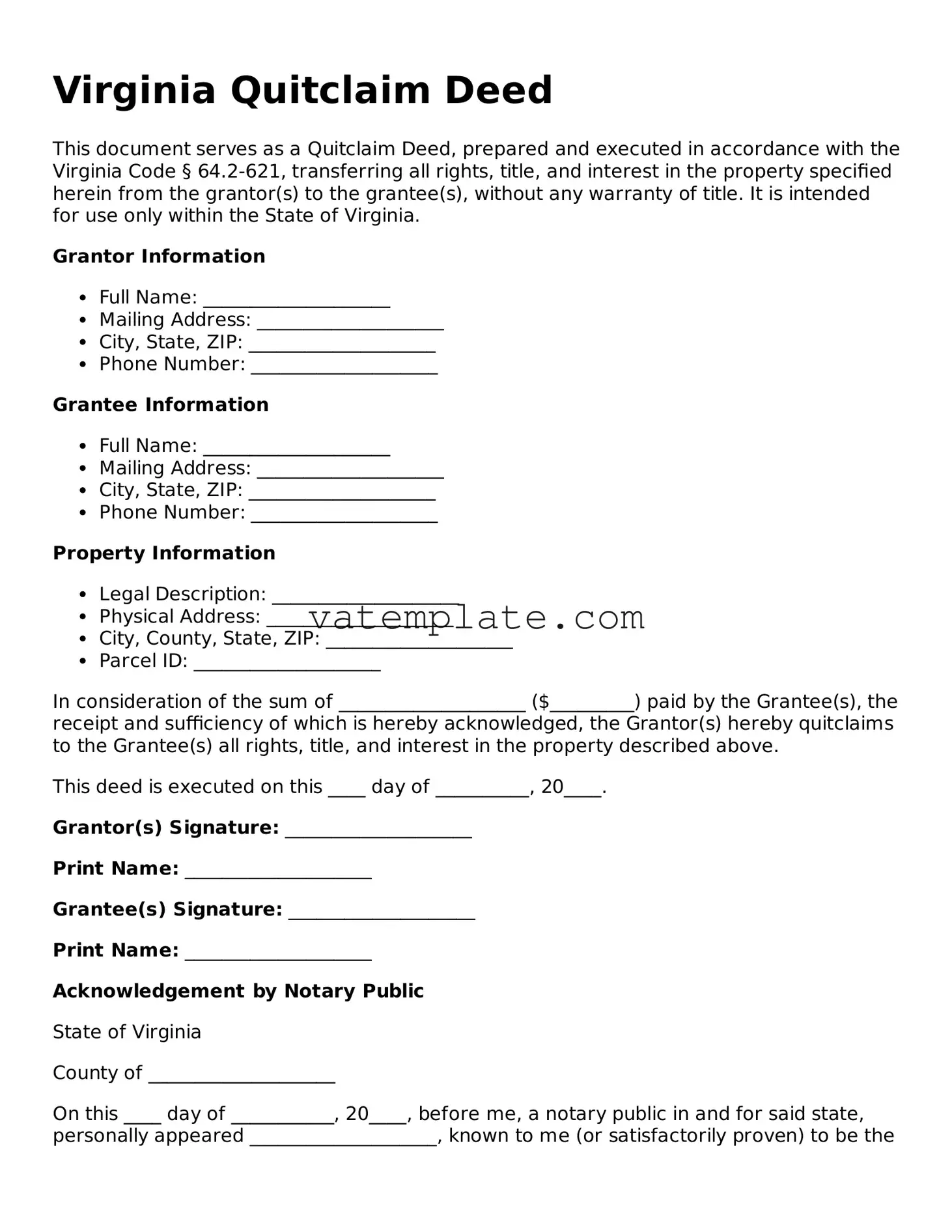Virginia Quitclaim Deed
This document serves as a Quitclaim Deed, prepared and executed in accordance with the Virginia Code § 64.2-621, transferring all rights, title, and interest in the property specified herein from the grantor(s) to the grantee(s), without any warranty of title. It is intended for use only within the State of Virginia.
Grantor Information
- Full Name: ____________________
- Mailing Address: ____________________
- City, State, ZIP: ____________________
- Phone Number: ____________________
Grantee Information
- Full Name: ____________________
- Mailing Address: ____________________
- City, State, ZIP: ____________________
- Phone Number: ____________________
Property Information
- Legal Description: ____________________
- Physical Address: ____________________
- City, County, State, ZIP: ____________________
- Parcel ID: ____________________
In consideration of the sum of ____________________ ($_________) paid by the Grantee(s), the receipt and sufficiency of which is hereby acknowledged, the Grantor(s) hereby quitclaims to the Grantee(s) all rights, title, and interest in the property described above.
This deed is executed on this ____ day of __________, 20____.
Grantor(s) Signature: ____________________
Print Name: ____________________
Grantee(s) Signature: ____________________
Print Name: ____________________
Acknowledgement by Notary Public
State of Virginia
County of ____________________
On this ____ day of ___________, 20____, before me, a notary public in and for said state, personally appeared ____________________, known to me (or satisfactorily proven) to be the person(s) whose name(s) is/are subscribed to the within instrument and acknowledged that he/she/they executed the same for the purposes therein contained.
In witness whereof, I hereunto set my hand and official seal.
Notary Public Signature: ____________________
Print Name: ____________________
Commission Expires: ____________________
